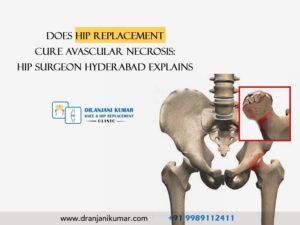An injury to the tendons or muscles surrounding the knee joint is known as a strain. It happens when these tissues are overused or subjected to rapid, violent movements that cause stretching or tearing.
An injury to the knee ligaments occurs, known as a sprain. Ligaments are strong bands of tissue that attach bones and support the joint. A quick twisting or bending knee motion can cause a ligament to be strained or ripped, resulting in a sprain.
A knee tear is a rupture or tear of one or more knee joint structures, such as the meniscus, ligaments, or tendons. These injuries, which can result in discomfort, oedema, instability, and restricted motion, can be brought on by unexpected trauma or overuse.
The seriousness of these wounds might vary substantially depending on the damage amount and the accident scene. Knee strain, sprain, and tear may be treated with rest, ice, compression, elevation, physical therapy, and, in some cases, surgical intervention. If you think you may have sustained any of these wounds, it is very important to seek medical attention right away since, if left untreated, they may develop over time and have long-term effects.
Causes of knee strain:
Overstretching or tearing of the muscles or tendons around the knee joint is the usual cause of knee strains.
A few typical reasons for knee strains include:
Overuse or repetitive stress: Engaging in activities that involve using the knee joint frequently or for an extended time, such as jogging, leaping, or squatting, can cause strain on the muscles and tendons surrounding the knee and eventually cause damage.
Inadequate conditioning: The muscles surrounding the knee joint may be more vulnerable to strain and injury if they are not strong and flexible.
Sudden impact: The knee joint can be put under a lot of strain and sustain strain or injury when subjected to a sudden impact or twisting action.
Poor form or technique: When engaging in physical activity or sports, improper form or technique can place unnecessary strain on the knee joint and raise the risk of strain or injury.
Muscular inconsistencies: Inconsistencies in the muscles, such as tightness and weakness in others, can strain or injure the knee joint.
When performing knee-joint-related tasks, it’s essential to maintain appropriate conditioning and technique. To reduce the risk of knee strains, it’s essential to gradually increase exercise intensity and length and allow adequate time for rest and recovery between exercises.
Causes of knee sprain:
Knee sprains are often brought on by trauma or injury to the knee joint, which stretches or tears the ligaments.
A few typical causes of knee sprains are as follows:
Sudden knee twisting or bending: Sudden knee twisting or bending can place too much strain on the knee joint, stretching or tearing the ligaments.
Direct contact to the knee: The ligaments may stretch or tear due to a direct blow or impact to the knee joint, such as during a fall or accident.
Hyperextension of the knee: Ligaments may be stretched or torn during hyperextension, which happens when the knee joint is forcedly straightened beyond its usual range of motion.

Landing improperly from a jump: Athletes who participate in leaping sports like basketball or volleyball risk landing incorrectly and harming their knee ligaments.
Quick changes in direction: In sports like soccer or football, sudden changes in direction can potentially injure the knee.
Knee injuries in the past, muscle imbalances, and poor conditioning can all raise the likelihood of knee sprains. It’s important to take the necessary measures when participating in knee-related activities, such as wearing the appropriate footwear, using the correct form, and warming up and cooling down before and after exercise.
Symptoms of knee tear:
Depending on the nature and degree of the injury, the indications and symptoms of a knee tear might differ. However, some typical ones include:
Pain: Knee tears frequently result in pain, which may be mild or acute and felt in general areas such as the knee joint or in particular locations such as the front, back, or sides of the knee.
Swelling: Knee tears may result in swelling and inflammation around the knee joint, which may cause the knee to feel stiff or restricted.
Difficulty bearing weight: Knee rips can make it difficult to put weight on the affected leg, making it difficult to stand or walk.
Instability: Knee tears may result in a loose or unstable feeling in the knee joint, making it challenging to move or control the limb.
Clicking or popping sounds: When the leg is moved, some knee tears may produce clicking, popping, or other sounds in the knee joint.
Limited range of motion: Reduced range of motion: Knee tears can limit the affected knee’s range of motion, making it challenging to bend or straighten the leg fully.
It’s important to remember that other knee problems or injuries can also cause these symptoms. Making a trip to the doctor is required for a proper diagnosis and treatment plan. The severity of a knee injury can depend on how badly the tendons, ligaments, and muscles surrounding the knee joint have been damaged.
The following broad principles can help you determine the degree of a knee tear, sprain, or strain:
Knee Strain:
The activity could lead to more pain |
Knee Sprain:
|
Knee Tear:
|
If you suspect a knee injury, you must see a doctor immediately to get a proper diagnosis and course of treatment. Your healthcare provider could ask for imaging tests like X-rays or an MRI to evaluate the extent of the damage and develop a treatment plan tailored for you.
Dr Anjani Kumar has 20 years of experience and successfully performed 2000 knee replacement surgeries, 350 hip replacement surgeries, and 500 pelvic acetabular surgeries throughout his career.
E-mail: anjanikumar@ gmail.com
Dr Anjani Kumar is an orthopaedic specialist
best Knee Surgeon in Kukatpally Hyderabad, Kadapa and Anantapur. Restore your hip joints and knee function with replacement or revision surgery in Kukatpally, Kadapa and Anantapur.
Contact now 9989112411, Dr Anjani Kumar, the best knee surgeon and hip specialist in Kukatpally, Kadapa and Anantapur. Restore your knee joint function with knee surgery. Get now knee fractures treatment and knee replacement surgeries like Total knee replacement (TKR), Partial knee replacement (PKR), Revision knee replacement etc.
Dr Anjani Kumar is the best hip surgeon in Kukatpally, Kadapa and Anantapur. Restore your hip function with revision hip joint replacement surgery. Get now hip fractures treatment and hip replacement surgeries like Total hip replacement (THR), Partial hip replacement (PHR), Revision hip replacement etc.
Dr Anjani Kumar is serving all patients in & near the Kukatpally Hyderabad, Kadapa and Anantapur cities in Andhra Pradesh.




